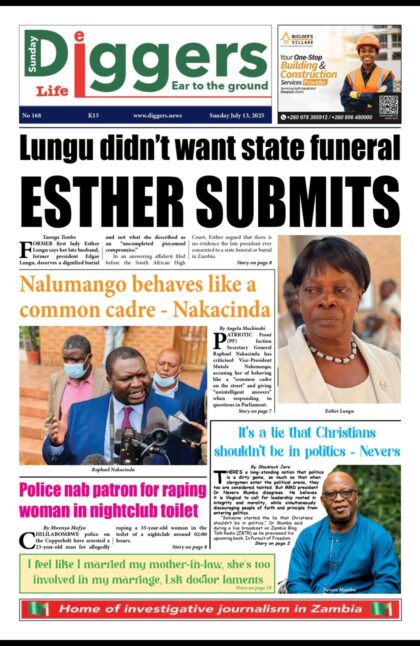Government is expected to roll out a K91 billion national budget next year, representing 27.5 per cent of Gross Domestic Product (GDP), to be supported by increased tax revenues amounting to around K6 billion more than the 2019 budget.
And government has proposed to keep debt interest payments to an average K14.4 billion per annum over the medium-term period (2019-2021).
According to the 2019 to 2021 Medium Term Expenditure Framework (MTEF), a total of K90.7 billion is expected to be spent in next year’s budget, indicating a nominal increase from this year’s K86.8 billion allocated in this year’s budget.
Tax revenues amounting to a total of K53.3 billion are projected to support next year’s budget, representing around 16.2 per cent of Gross Domestic Product (GDP), up from K47.5 billion in last year’s budget, while non-tax revenues are expected to marginally climb to K9.6 billion, up from K8.4 billion last year.
According to the Green Paper availed via the Ministry of Finance, Zambia’s GDP had been projected to grow to over K330 billion next year, up from K300 billion this year.
Total revenue generation expected for next year’s budget is K62.9 billion, representing 18.6 per cent of GDP, up from last year’s K55.8 billion.
Government is also expected to marginally increase spending on personal emoluments next year to a total of around K25.4 billion, up from last year’s K25.1 billion.
And a detailed breakdown of the Green Paper further shows that government intends to keep a lid on debt interest payments to around K14.4 billion per annum over the medium-term.
“Over the past few years, Government had embarked on an expansionary fiscal policy in order to develop public infrastructure such as roads, health facilities and schools, which was largely financed by both external and domestic borrowing, resulting in increased debt service obligations. To this effect, expenditure on interest payments is projected to average K14.4 billion or 22.5 per cent of domestic revenues per annum, over the medium-term,” the Green Paper states.
This projection, however, is in the wake of government’s higher than projected debt servicing costs for the 2019 national budget.
Meanwhile, the Green Paper further reveals that government proposes to limit the public service wage bill, which typically gobbles around half the budget.
“Expenditure on personal emoluments as a share of domestic revenues still remains high at 47.1 per cent in 2018, thereby, constraining other developmental expenditures. Therefore, over the medium-term, government will ensure that the public service wage bill, as a share of domestic revenues, is narrowed to not more than 40 per cent by 2021,” reads the Green Paper.
“This will be achieved by restricting recruitment to only front-line personnel and ensuring that annual wage adjustments are made in the context of the resource envelope. In this regard, a provision of K808.7 million has been allocated over the medium-term to cater for the recruitment of approximately 15,500 front-line personnel.”
During President Edgar Lungu’s opening of the Fourth Session of the Twelfth National Assembly earlier this month, the Head of State indicated that tackling Zambia’s huge public debt will be prioritized, meaning that Finance Minister Dr Bwalya Ng’andu will be under pressure to raise revenues from the mining sector, while trying to ensure that social sector spending is not too drastically curtailed.
Zambia’s external debt stock has risen to an unprecedented US $10.23 billion by June 30, 2019, from US $10.18 billion as at March 31, 2019, while domestic debt equally jumped to K60.3 billion compared to K58.3 billion during the same corresponding period.



















